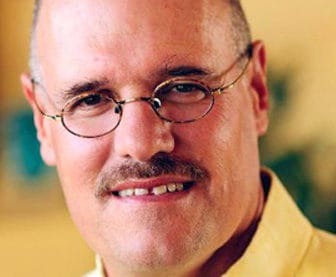COMMENTARY: Our local electric utility, El Paso Electric (EPE), just submitted its 20-year operating plan for approval by the Public Regulation Commission. It’s a real wallet buster for consumers and a head scratcher for anyone who follows the utility industry.

Courtesy photo
Steve Fischmann
If you like history, it makes for a revealing excursion into 1960s energy-industry thinking. If you enjoy true crime stories, there might even be some larceny in it!
Here are just a few of the many plan features that can use some explaining:
Plant Investment
Four newly built gas-fired power plants dubbed Montana 1-4 are projected to run an average of just 150 hours per year through 2034. When obtaining final regulatory approval to construct the facilities in September 2013, EPE said each plant would operate 3,500 hours per year. The four new plants will cost a total of $370 million to put in service.
Consumers now stand to be charged billions of dollars to keep mostly idle facilities open for 40 years. Is this a case of inept planning, or a deliberate deception by EPE? Either way, should customers be asked to pay for it?
EPE, please explain. (And I hope our attorney general is listening!)
The plan shows five additional existing power plants operating between zero and 40 hours per year until they go out of service between 2020 and 2024. That means ratepayers will be stuck with maintenance and financing costs for a total of nine power plants that are idle 99 percent of the time. And be required to pay EPE an annual 10 percent return on all that wasted investment to boot!
EPE, please explain some more.
Reducing peak demand
The only excuse EPE has for operating nine plants less than 1 percent of the time is that they are needed to meet peak electricity demand spikes on hot summer afternoons. If you’re thinking there must be far less costly ways to meet peak power demand, you are right. Adopt proven strategies to reduce peak power use!
A simple pricing strategy has been shown to reduce peak demand in homes by 20 to 40 percent at electric utilities around the world. Charge a steep premium for power used during a few peak-demand, summer-afternoon hours, and offset it with an even steeper discount for power used during non-peak hours. Called “time of use” rate plans, consumers who have voluntarily adopted them report significant cost savings with no loss of comfort.
Well-designed peak-demand rate plans have proven so effective that California is requiring time-of-use rates for all residential electric customers by 2020. EPE’s current time-of-use program is so awful that fewer than 100 of its 83,000 New Mexico residential customers have signed on. Instead of emulating successful models, their 20-year plan foot-drags with a vaguely defined study and pilot.
EPE, please explain.
Other ways to reduce peak demand include incentives for installation of peak energy control devices, expanded energy-efficiency upgrades, and a multitude of targeted ratepayer-incentive strategies. Rapidly falling prices for batteries that store non-peak power for later use promise even more peak-reduction opportunities in the near future.
Federal Energy Regulatory Commission staffers estimated that systemwide peak demand could economically be cut by 20 percent as far back as 2009. Technology advances are rapidly increasing that potential. Yet, the new El Paso Electric plan establishes no peak-demand reduction goals and no roadmap for stepped-up peak-reduction efforts.
EPE, please explain.
Renewable Energy
Solar power consistently pencils out as a least-cost power source in our area, and costs continue to fall. As entire nations and individual states set goals of 50-percent renewable energy or more, EPE’s plan calls for a measly 7 percent. This in spite of a state-mandated 20-percent renewable-energy goal by 2020!
EPE, please explain.
Corporations like Google and Walmart are bypassing utilities to purchase cheap renewable power directly from other sources. Stand-alone home systems with solar panels and batteries are projected to provide lower-cost power than utilities within 10 years. Defecting EPE consumers could leave remaining customers with a huge tab for today’s bloated plant and transmission investments.
Despite these developments, EPE’s 20-year plan assumes a world of captive customers forced to accept whatever costs are shoved down their throats.
Does El Paso Electric exist in an alternate universe?
EPE, please explain.
Please, please, please explain!
Fischmann is a former New Mexico state senator and former corporate strategic planner.
